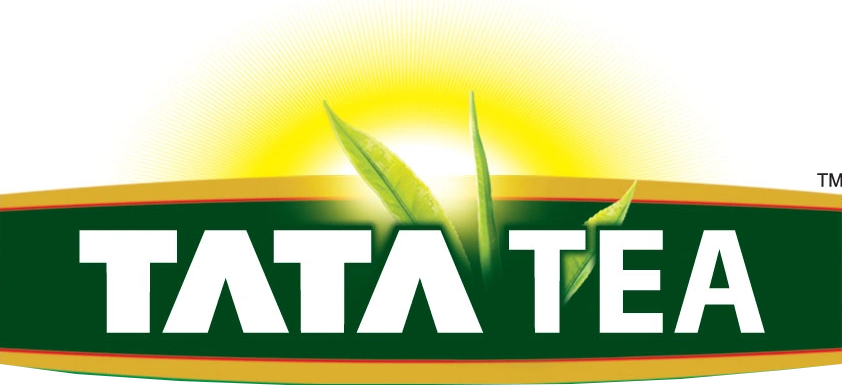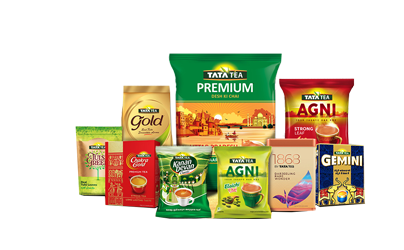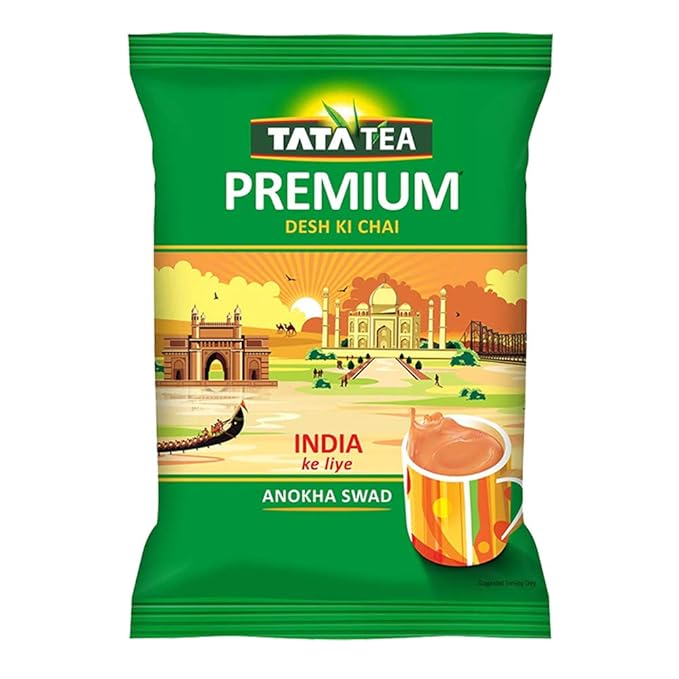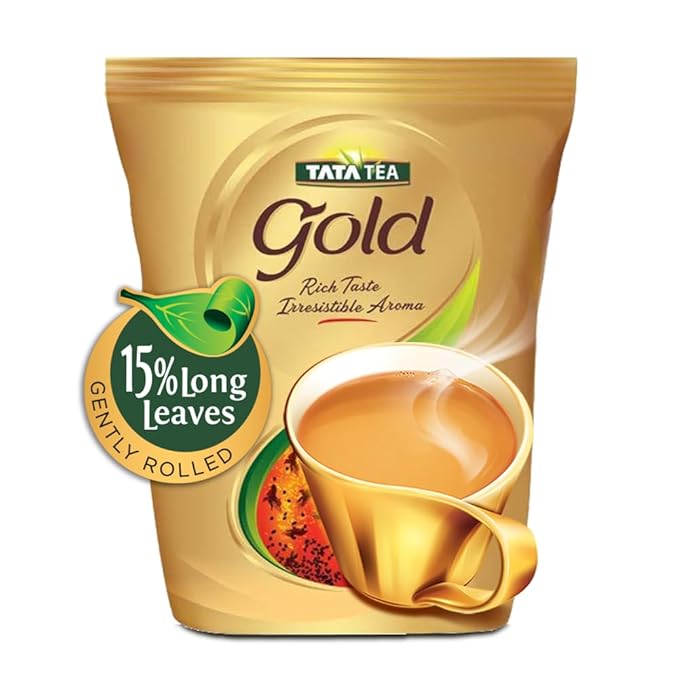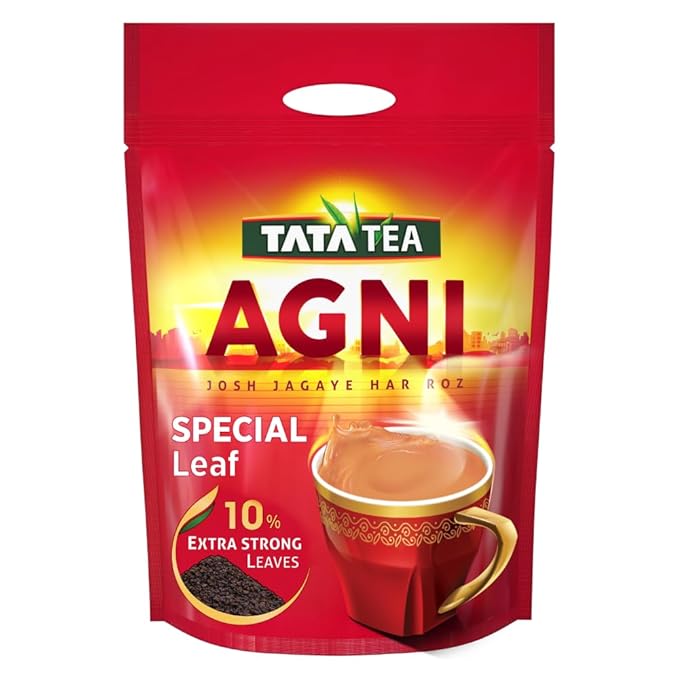Brand Overview
Brand:
Tata Tea
Parent Company:
Tata Consumer Products (formerly Tata Global Beverages)
Core Categories:
Beverages
Taglines Over the Years:
- Jaago Re
- Har subah sirf utho mat, Jaago Re
- Desh Ka Garv ? Tata Tea
Market Context at Launch
Pre-1980s India:
- Tea was a mass-consumed product but largely loose and unbranded.
- Dominated by Brooke Bond and Lipton (then owned by Unilever).
- Branding and packaging were still at a nascent stage in the tea industry.
- Tata Group entered through a joint venture with UK-based James Finlay in the 1960s (Tata Finlay).
- In 1983, Tata took full control and renamed it Tata Tea.
Marketing Mix (4Ps)
Product Strategy
Core Products:
- Tata Tea Premium – flagship offering, especially in North and East India
- Tata Tea Gold – higher-end blend for discerning consumers
- Tata Tea Agni – economy brand for rural and mass segments
- Tata Tea Chakra Gold – strong South India presence
- Tetley – acquired for international expansion (UK-based brand)
- New launches: Tata Tea 1868, Tata Tea Teaveda (Ayurvedic), Quick Chai (instant premix)
- Blend variants by regional preferences (Assam, Darjeeling, Nilgiri bases).
- Packaging evolved from paper pouches to moisture-sealed poly packs and zip-lock pouches.
- Innovations like flavored teas, green teas, herbal infusions under Tata and Tetley.
Pricing Strategy
- Multi-tiered portfolio: Premium (Gold), Mid-range (Premium, Chakra), Economy (Agni, Gemini).
- SKUs from ₹10 trial packs to ₹500+ family packs and gift packs.
- Affordable enough to compete with loose tea but with value-added appeal.
Promotion Strategy
Positioning Evolution:
- Initially focused on regional strength and flavor.
- Later pivoted to emotional and nationalistic positioning.
- Became synonymous with social consciousness through “Jaago Re”.
- Launched to coincide with rising political apathy among youth.
- Early campaigns focused on:
- Voter registration and participation
- Fighting corruption
- Women's safety
- Gender equality and prejudice
- Helped shift brand identity from a “tea brand” to a platform for awakening.
- Online petitions, partnerships with NGOs.
- AI-led local language campaigns in recent years to address region-specific issues.
- Interactive microsites like JaagoRe.com for civic awareness.
- Rarely used celebrities; the message was the hero.
- Sometimes featured influencers or common citizens for authenticity.
Distribution Strategy
- Present in urban and rural retail across India.
- Strong general trade footprint and aggressive push into modern retail and e-commerce.
- Rural penetration via Chhota Packs, low unit packs priced at ₹5–10.
- Also sold internationally via Tetley and Tata Tea exports.
Competitive Landscape
Main Competitors:
- Hindustan Unilever (HUL): Brooke Bond Red Label, Taj Mahal, 3 Roses
- Wagh Bakri (West India), Duncans, Society Tea, Girnar, Tata Coffee (internal complement)
Tata Tea's Differentiators:
- Social impact branding (Jaago Re) created unique emotional equity.
- Regionally nuanced brands – Chakra in South, Premium in North, Agni in rural belts.
- Focus on national pride and civic responsibility, unlike functional messaging by competitors.
Challenges & Strategic Responses
Challenges:
- Stiff competition from entrenched brands like Red Label.
- Rise of health consciousness and shift to green/herbal teas.
- Loose tea continues to dominate in rural markets.
- Acquired Tetley (2000) to expand globally and enter green tea and wellness space.
- Introduced Tata Tea Teaveda (Ayurveda-based blends), Quick Chai, and Cold Brew variants.
- Pivoted messaging toward progressive values and empowerment.
Consumer Perception & Emotional Connect
- Perceived as a socially conscious, patriotic, and value-driven brand.
- Strong connect with middle-class India, especially educated youth and urban families.
- Tata Trusts' association boosts trust and reinforces brand's ethical standing.
Impact & Legacy
- Helped convert loose tea consumers to branded tea.
- Created a new category of “activist branding” in Indian FMCG.
- Changed tea advertising from domestic comfort to national consciousness.
- Created India's most recognized purpose-led FMCG campaign.
Current Position (as of 2025)
- Market leader in branded tea (by volume share) – along with HUL's Red Label
- Present in over 200 million households in India
- Diverse portfolio with green teas, herbal infusions, and flavored variants
- Continued use of digital platforms for civic education and youth engagement
- Growth in exports and global markets via Tetley
- New product lines: RTD (ready-to-drink) teas and instant chai gaining traction
Key Learnings
- Cause marketing can drive long-term brand equity when done with authenticity.
- Regional customization and portfolio tailoring are crucial in a fragmented market like India.
- Trust built by corporate parent (Tata) is a strategic advantage.
- Emotional and ethical branding can differentiate even a commoditized product like tea.
Summary
Tata Tea has evolved from a commodity player into a catalyst for societal change, using tea as a medium to awaken India's civic consciousness. Its “Jaago Re” campaign not only transformed the brand but also redefined the boundaries of consumer engagement in FMCG. With deep-rooted values, regional acumen, and continuous innovation, Tata Tea remains India's cup of change.

